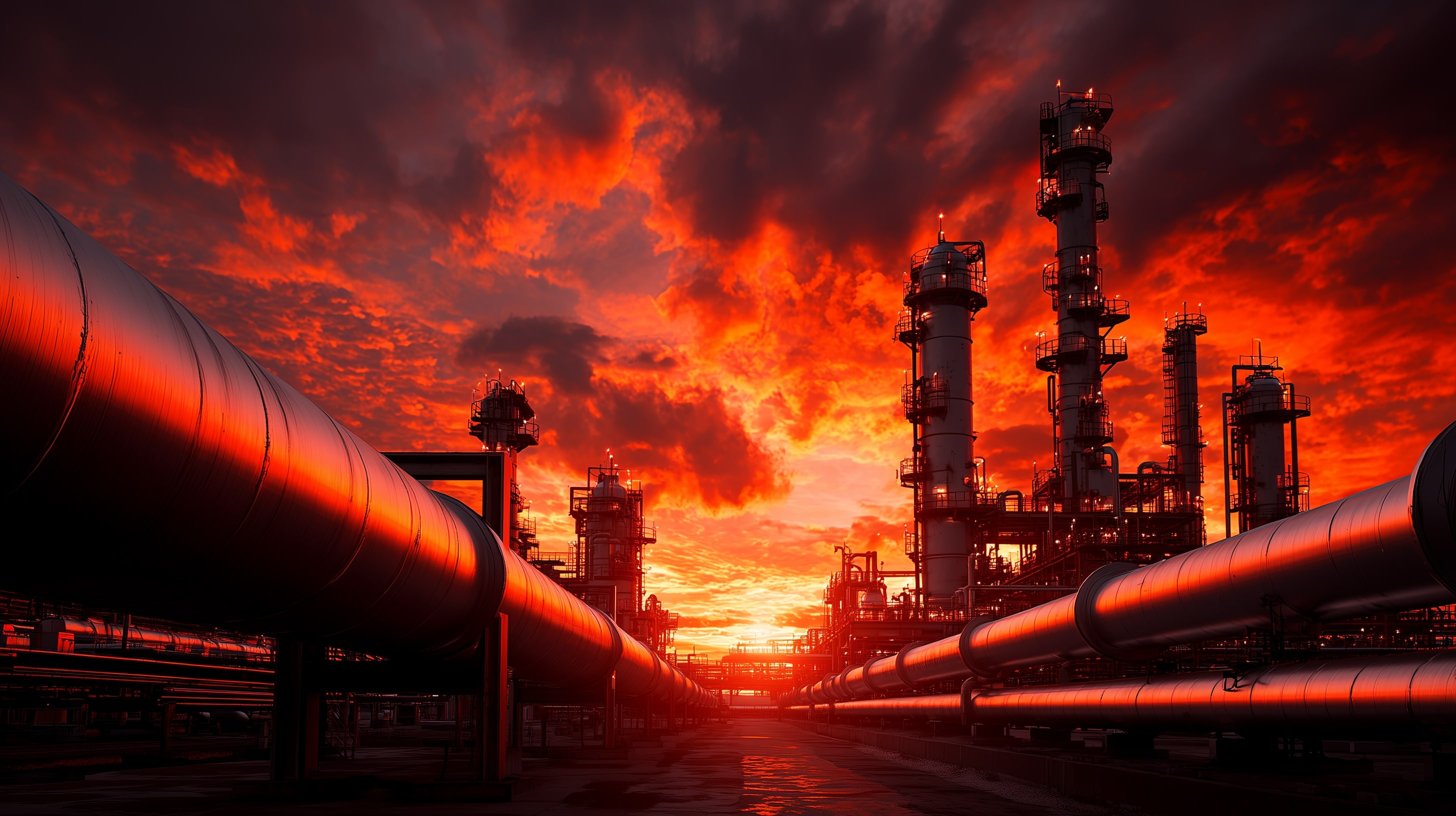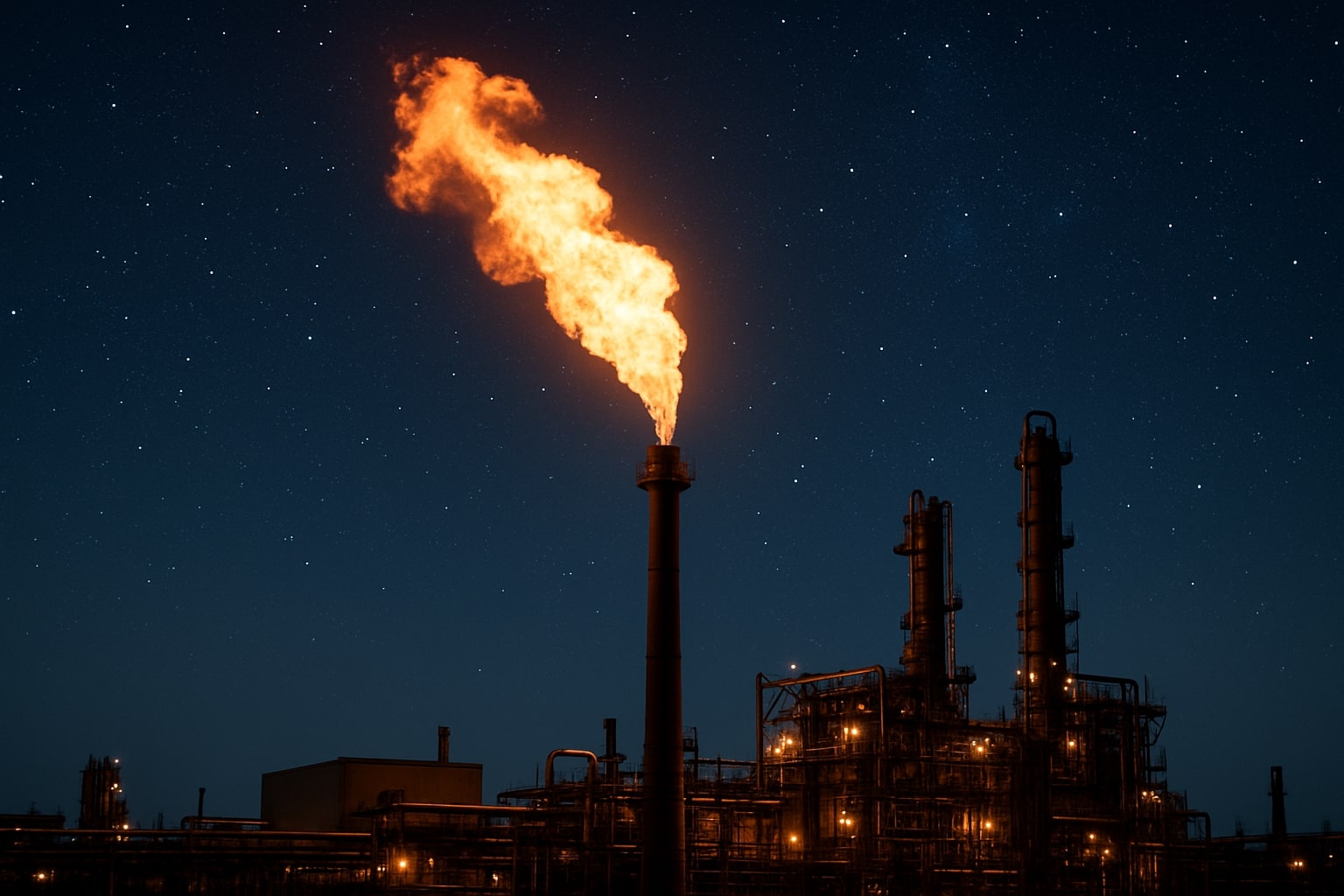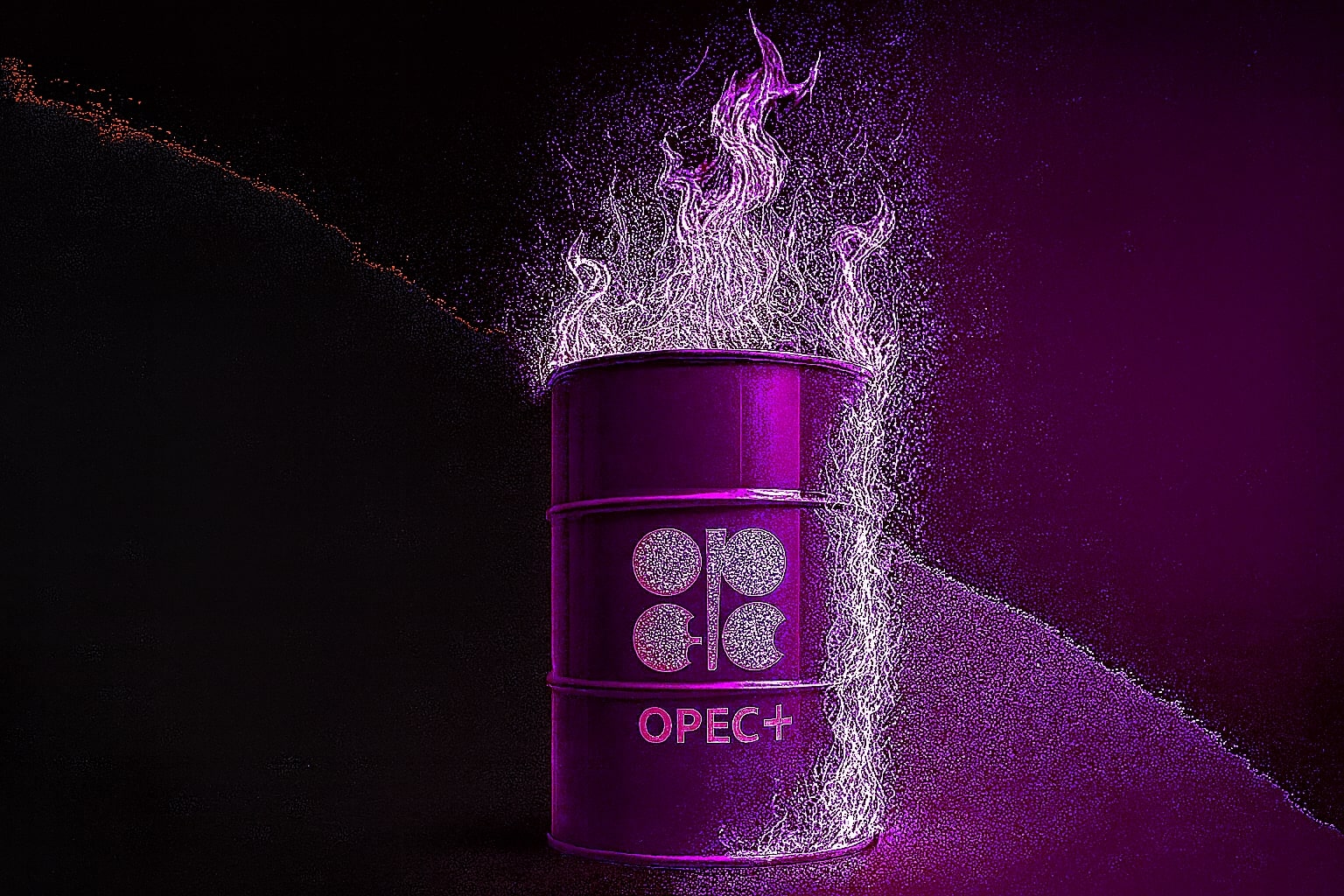
Natural Gas Price Dips to $3.82 as Warm Weather, Record Production, and High Inventories Pressure the Market
NG=F slides below its 50-day moving average as U.S. production holds near 108 bcfd and storage surges past 3.9 tcf, signaling sustained oversupply | That's TradingNEWS
Natural Gas (NG=F) Extends Decline to $3.82 as Warm Weather, Oversupply, and Weak Heating Demand Pressure Prices
NG=F Trades Below 50-Day Average as Production Hits 108 bcfd and Inventories Surpass 3.9 tcf
Natural Gas (NG=F) prices continue to retreat, falling to $3.82 per MMBtu, slipping below the 50-day moving average of $3.875, confirming sustained bearish momentum. The market remains overwhelmed by abundant supply as U.S. production hovers around 108 billion cubic feet per day (bcfd) — a three-week high — while unseasonably warm weather across the United States curbs heating demand. Despite October typically marking the start of the seasonal rally, the commodity is trading over 12% lower year-to-date, with strong output and elevated inventories keeping prices under pressure.
Overproduction Keeps Market Saturated Despite Global LNG Demand
American gas production remains near record highs, maintaining pressure across the futures curve. Daily output above 108 bcfd, compared with last year’s 105–106 bcfd, continues to feed a supply glut that overshadows even steady LNG export demand. Baker Hughes data confirmed that 121 active rigs remain operational, reflecting no slowdown in drilling despite weakening spot margins. This constant output has resulted in U.S. storage levels around 3.925 trillion cubic feet (tcf) — roughly 5–6% above the five-year average, leaving the market well-supplied heading into winter.
Inventories are particularly strong in North America, with the U.S. entering November nearly 4.5% above seasonal norms, while European storage sits at 83% of capacity, lower than last year but still sufficient to avoid immediate shortages. The combined North American supply cushion has removed the geopolitical premium that once supported natural gas prices, even as the U.S. Gulf Coast LNG buildout accelerates and pipeline exports to Mexico rise between 5.5–8.5 billion cubic feet per day (bcf/d). Mexican officials have expressed concern that rising U.S. LNG exports could constrain future pipeline flows southward, but for now, domestic oversupply remains the dominant factor.
Technical Breakdown Confirms Short-Term Bearish Momentum
Technically, NG=F remains trapped in a declining channel after breaking below support at $3.83, with momentum suggesting a retest of the $3.55–$3.60 zone, aligned with the 50-day moving average and a confluence of trendline support. The most recent swing high at $4.21 formed a lower peak, reinforcing the medium-term downtrend. Resistance stands at $4.10, followed by $4.23 — the mid-June peak — while a decisive move above $4.21 could target the 78.6% Fibonacci retracement near $4.47. Until then, the bias remains to the downside.
The 200-day moving average around $3.61 and rising support channel lines from mid-September form the key structural floor. A close below $3.82 confirms bearish continuation toward $3.55, while a bounce above $3.90 would be the first sign of short-term stabilization. Volume data shows selling pressure dominating, with futures open interest climbing 4% over the past week — a sign that short positions continue to build. Momentum indicators such as the 14-day RSI at 42 and a negative MACD crossover reinforce the near-term bearish setup.
Europe’s Gas Prices Ease as EU Average Falls 8.1% in H1 2025
Across Europe, household gas prices have fallen sharply, reinforcing the global downtrend. According to Eurostat data, EU residential gas prices dropped 8.1% in the first half of 2025 to €11.43 per 100 kWh, down from €12.44 in late 2024. Tax and levy components rose slightly from 30.0% to 31.1%, reflecting the gradual removal of post-crisis subsidies. The regional variation remains stark: Sweden leads with €21.30, followed by the Netherlands (€16.17) and Denmark (€13.06), while Hungary (€3.07) and Croatia (€4.61) remain the cheapest.
For non-household consumers, prices have stabilized with minor increases, as taxes rose from 15.2% to 16.5%, trimming industrial margins. Despite that, energy cost pressures have eased for most EU members as mild weather reduced heating consumption. These European dynamics mirror the oversupply and demand stagnation seen in the U.S., with both markets entering winter well-stocked and lacking the volatility that defined 2022–2023.
Weather Patterns Suppress Seasonal Demand Expectations
Meteorological data continues to weigh on sentiment. Forecasts indicate that warm weather will persist across the U.S. through November, limiting heating needs and preventing the usual seasonal drawdowns. Models that previously projected a colder weekend in late October were invalidated as temperatures held above seasonal averages, causing further price erosion. With forecasts now showing mild patterns for at least two more weeks, analysts see little immediate upside unless a cold front emerges by mid-December.
The failure of colder weather to materialize has reduced the traditional winter premium embedded in natural gas futures. Heating degree days — a key metric for estimating demand — remain 8–10% below average across major U.S. consuming regions. This aligns with EIA storage data, which showed an 87 bcf injection versus expectations of +83 bcf, further highlighting the imbalance between supply and consumption.
Global LNG Expansion and Mexico Pipeline Exports Reshape Demand Outlook
The rapid growth in U.S. LNG export capacity, particularly along the Gulf Coast, is transforming the natural gas landscape. By early 2026, U.S. LNG capacity is expected to exceed 20 bcf/d, giving the U.S. a larger influence on global pricing. However, as Europe and Asia absorb more U.S. LNG, competition for feedgas could tighten regional availability and increase volatility. Mexican regulators have warned that the expansion could “redirect supply away from the pipeline market,” though current exports to Mexico remain stable at roughly 8.2 bcf/d.
In the meantime, domestic consumption continues to lag supply growth. Industrial demand remains steady, while power-generation demand has dipped 2.8% year-over-year due to renewables expansion and mild weather. Unless LNG exports accelerate or winter demand intensifies, the U.S. gas market faces continued downward pressure through Q4 2025.
Read More
-
SCHD ETF Price at $27: Can SCHD’s 4% Yield and 9.15% Dividend Growth Beat High-Yield Covered Call ETFs?
15.12.2025 · TradingNEWS ArchiveStocks
-
XRP ETFs Close on $1B Inflows as XRPI at $10.92 and XRPR at $15.52 Hit 52-Week Lows
15.12.2025 · TradingNEWS ArchiveCrypto
-
Natural Gas Price Forecast: NG=F Holds the $4 Floor as Oversupply Clashes with 2026 LNG Demand
15.12.2025 · TradingNEWS ArchiveCommodities
-
USD/JPY Price Forecast - Dollar to Yen At 155: Yen Strength Builds As BoJ Hike And NFP Collide
15.12.2025 · TradingNEWS ArchiveForex
Regional Price Disparities Highlight Structural Oversupply
Spot market data reveals widening regional spreads. Benchmark prices at Henry Hub hover near $3.82, while Transco Zone 5 South trades around –$0.23, and Westcoast Station 2 has fallen to –$0.47, reflecting localized supply saturation. Waha Hub prices in Texas have fluctuated between –$0.50 and $0.44, underscoring the logistical challenges of excess Permian production. The Houston Ship Channel benchmark remains relatively stronger but faces risk of weakening as pipeline constraints persist into the end of the year.
These dynamics mirror a global pattern of decoupled pricing, where pipeline congestion and localized weather drive short-term anomalies despite ample overall supply. European and Asian benchmarks remain structurally higher — TTF near €29/MWh and JKM around $11.30/MMBtu — but the gap continues to narrow as U.S. LNG exports anchor global pricing equilibrium.
Fundamental Drivers: Storage, Supply Chain, and Market Sentiment
Storage metrics remain the backbone of current price action. The 3.925 tcf U.S. inventory level provides a sizable cushion heading into winter, effectively capping near-term rallies. The EIA projects storage will peak near 4.0 tcf before winter withdrawals begin, with only a 20% probability of subnormal inventories by January 2026. Sentiment indicators echo this cautious tone — speculative longs have fallen 9% month-over-month, while commercial hedgers have increased short exposure by 12%, anticipating continued softness.
Investor psychology has shifted toward “wait-and-see” positioning, with energy traders prioritizing short-term volatility trades over directional bets. Despite weaker fundamentals, analysts note that the long-term demand trajectory remains stable, supported by the U.S. LNG export boom and industrial electrification trends, which sustain baseline consumption even during warm spells.
TradingNews.com Verdict: HOLD (Bearish Bias While Below $3.90)
Natural Gas remains under sustained downward pressure as structural oversupply, mild weather, and strong inventories dominate market sentiment. The technical picture confirms continued weakness below $3.90, with a likely retest of $3.55 before a potential rebound. A close above $4.00 would signal the first recovery attempt, though any sustained rally requires colder weather or export acceleration.
With prices below the 50-day and approaching the 200-day average, NG=F trades in a fragile equilibrium between abundant supply and delayed seasonal demand. Traders should monitor inventory draws and weather revisions closely.
Verdict: HOLD — bearish bias maintained below $3.90, potential rebound only if storage draw accelerates and price closes above $4.00; short-term range $3.55–$3.90.



















